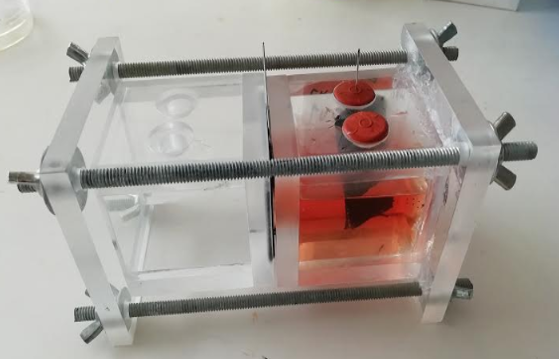 |
|
Clostridium strains are known due to their capability to produce hydrogen and free electrons during their metabolism; however, voltage production and electric current generation by Microbial Fuel Cell (MFC) have not been deeply explored yet employing these microorganisms. In this paper we evaluated both voltage generation and Chemical Oxygen Demand (COD) reduction in municipal wastewater by one chamber MFC performed with graphite cloth electrodes and inoculated with Clostridium bifermentans, Clostridium sordellii and native bacteria. Clostridium strains grew properly on both Ravot medium and municipal wastewater reaching the maximum develops at 96 and 120 hours for bifermentans and sordellii respectively. Microbial growth kinetics determined by Gompertz modified model showed low lag times for all tests. Clostridium sordellii showed not only the maximum voltages but also the highest potential to remove organic matter from wastewater since COD diminished around 60% at the end of MFC’s operation. The addition of phosphate salts solution increased the removal of organic matter but was not efficient to generate voltage, moreover, the microorganisms present in wastewater were able to produce voltage but the amount of organic matter removed by them were low. The maximum generated voltage, Power Density (PD), Volumetric Power Density (VPD) and Current Density (CD) values were observed in MFC inoculated with Clostridium sordelli and performed with wastewater with no buffer solution, they were; 0.372 V, 153.43 mW m-2, 1.73 W m-3 and 0.413 A m-2 respectively. Clostridium strains showed a high potential to reduce COD in wastewater generating green energy as by-product.
Keywords: bioelectrochemistry, Clostridium bacteria, graphite cloth, microbial fuel cell, municipal wastewater.
|
|
 |

